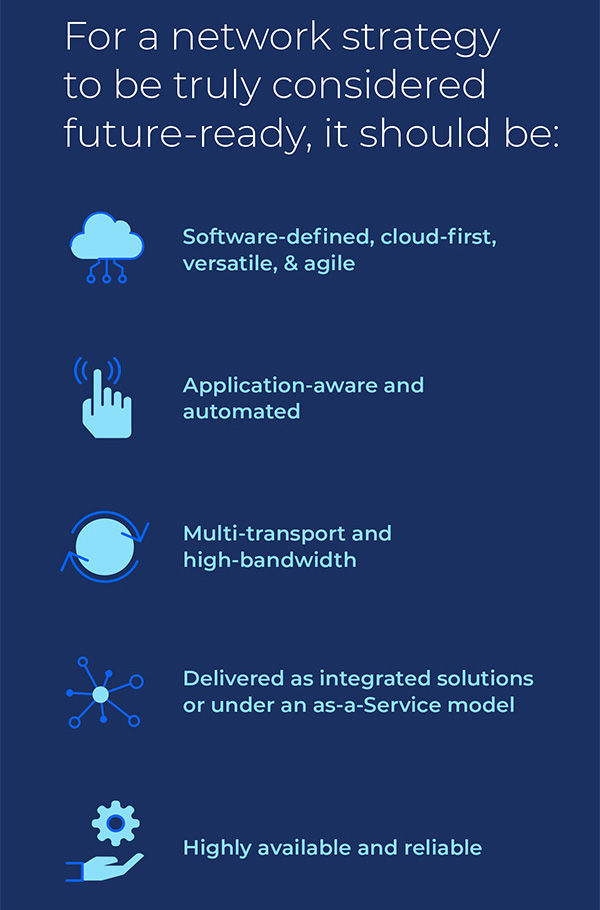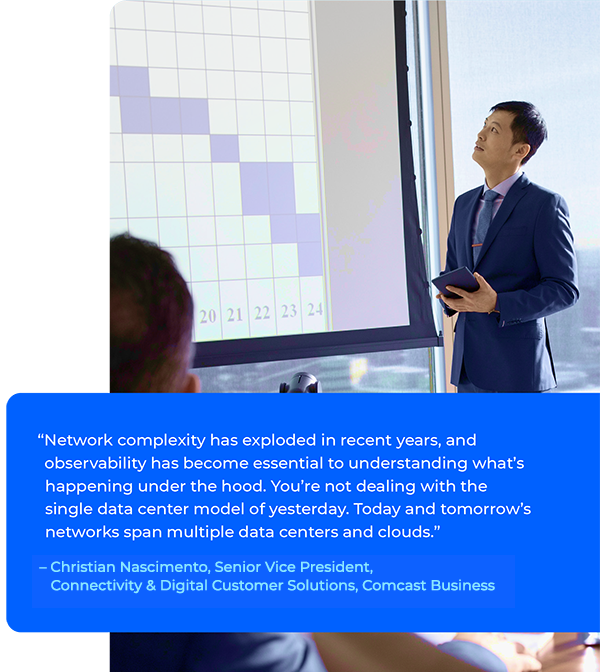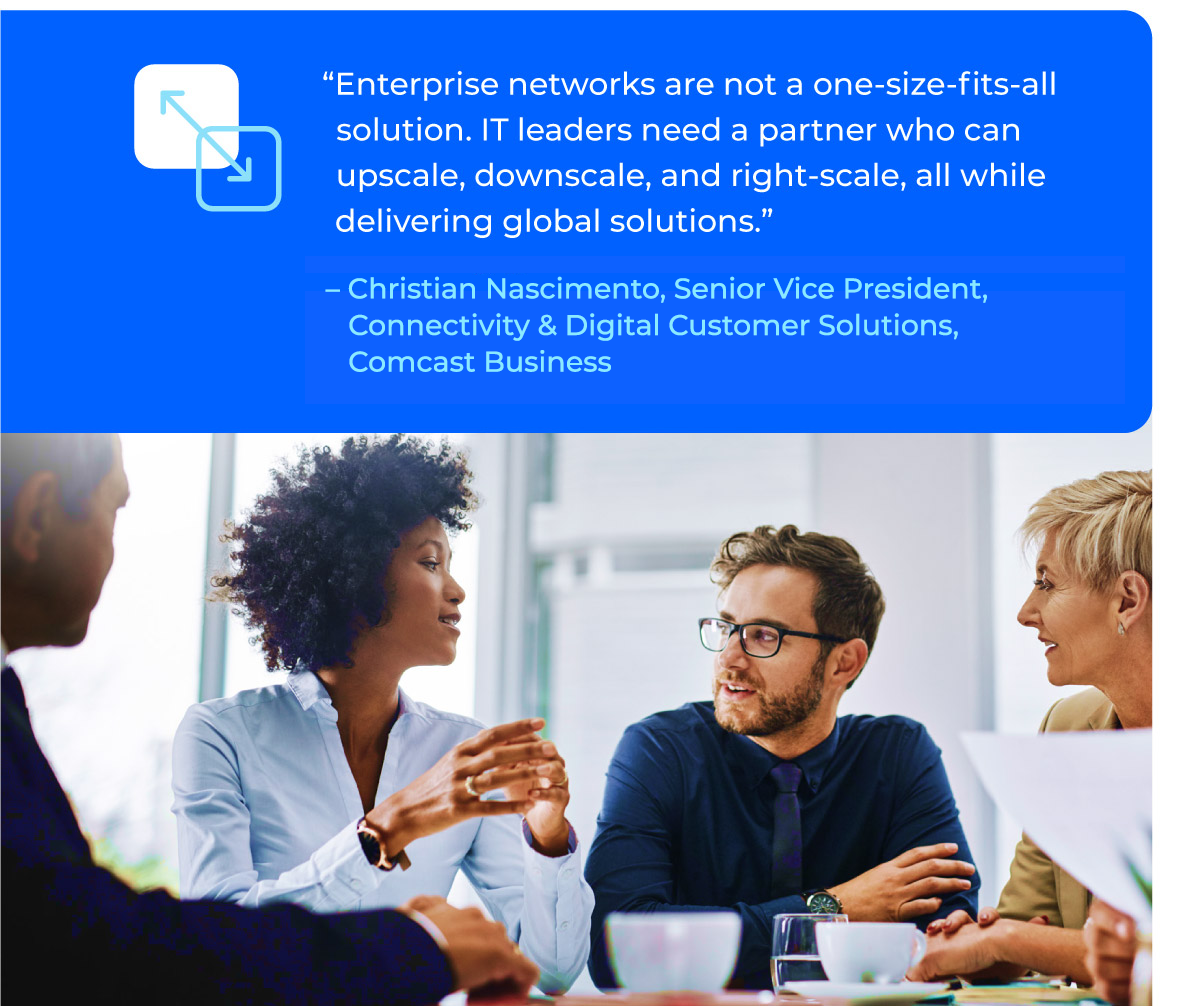Is Your Enterprise Network Ready for What's Next in CX and EX?

Changing work models and customer expectations are reshaping the enterprise network edge, altering how IT leaders approach wide-area networking, last-mile connectivity, application performance network security and cloud-delivered collaboration tools such as Unified Communications as a Service (UCaaS). As enterprises look forward, they face new challenges and uncertainties. For this reason, they are emphasizing connectivity and data to automate key processes, improve experiences, and increase corporate resiliency.
Enterprise decision makers have recognized the value of data, its crucial role in driving revenue, experiences, and outcomes, and how connectivity keeps that data in motion. Many organizations can succeed and gain a competitive advantage by leveraging investments in connectivity, in the face of uncertainty and changes across the market.
That competitive advantage will come through connected employee and customer experiences: cross-channel interactions that feel seamless, enable productivity and satisfaction, and, quite simply, work as they should–every time.
To be effective, these connected digital experiences need to be real-time, personalized, frictionless, secure, and underpinned by a robust fabric of connectivity. Powering these experiences and clear, jitter-free unified communications through voice and video streams at scale requires future-ready networking — fast, reliable, agile network connectivity with integrated security.

01.
Software-defined, cloud-first, versatile, & agile
Implementing technology that scales and evolves is priority number one for enterprises as they prepare for the future. SD-WAN is a crucial cornerstone to creating this versatility and agility. It increases network performance by prioritizing business-critical traffic, reducing packet loss, and latency issues.
Further, by using broadband to off-load non-critical business apps, automating monitoring tasks, and managing traffic through a centralized controller, SD-WAN can assist with the contemporary problem of network sprawl. Software-defined wide-area networks also help reduce overhead costs by eliminating certain hardware expenses.
Cloud enablement, from management to access, will also play a significant role in the future enterprise network. And SD-WAN enables direct-to-cloud access at the remote branch, thereby eliminating backhauling traffic — routing all cloud and branch office traffic through the data center — meaning that customers and employees alike can directly access cloud applications regardless of location.

02.
Application-aware and automated
Automation is driving substantial digital transformation across all industries, and network services will be a vital driver of the change. To evolve, enterprise organizations need application-aware automated networks with built-in information and intelligence about various applications and traffic patterns to dynamically route and prioritize connectivity needs.
Many IT leaders are also looking to AIOps, which uses big data, analytics, and machine learning capabilities to collect aggregate data from multiple IT infrastructure components, app demands, performance-monitoring tools, and service ticketing systems. AIOps will empower further automation through predictive analytics and response.
Network complexity will only grow with these capabilities and more, making observability a critical component moving forward. By utilizing diverse data sources, IT teams can understand what is happening inside the network and how the state of the network impacts business objectives and customer/employee-user experience.

03.
Multi-transport and high-bandwidth
Connectivity matters just as much as a future-ready enterprise network’s composition. This means enabling versatile transport modes and connectivity options like broadband, converged fiber and cable, 5G, and private wireless. And the need for speed is only increasing, so IT leaders should consider high bandwidth for communications, growing data sets, and exponential processing needs for new sources of information.

04.
Delivered as an integrated solution or under an as-a-Service model
Unique use cases across the enterprise also require an integrated approach that offers multiple connectivity modes through a single integrated solution like UCaaS. IT decision-makers can further optimize access to application workloads through managed network functionality.
Some other benefits of this model include:
Managing costs
by lowering operational, service maintenance, software, and infrastructure costs from the lack of physical hardware required.
Maintaining a competitive edge
by helping enterprises function optimally and remain focused on growth, employing the latest technologies, and providing strategic network advice.
Maximizing performance
through high network availability and increased productivity reducing support time, and enabling effective monitoring.
Improving the quality of service
(QoS) by continuously keeping infrastructure up-to-date and reducing network downtime.
05.
Secure, highly-available, and reliable
Industry trends demonstrate growing complexity, and remote and hybrid work models make networks more susceptible to attack. The expansion of connected customer experiences, devices, and digital customer touchpoints complicates security and also creates more potential threat points. To make hybrid and remote work models sustainable for the future, IT leaders should focus on scaling their networks and making them more secure.
At every level of the organization, IT teams should examine security issues, gaps, and practices. Integrated networking and advanced security with threat detection on-premises, cloud-based, or securing remote clients (e.g., SASE, CASB, UTM, SWG, FWaaS, etc.) are essential. And IT leaders should also consider unique hybrid SASE options and multiple vendors.
Stay Ahead of the Curve
Enterprises have learned they must now deliver resilient and seamless connectivity across a new perimeter-less network for customers and employees alike. Connectivity solutions must be able to adapt to both real-time and long-term connectivity demands.
Future-forward organizations will need to continually assess their current network, IT, applications, and cloud footprints to understand how people, processes, and technology are working continuously to ensure that their technology resiliency and competitiveness do not fall behind. So, to remain dynamic and competitive, enterprise decision-makers should prioritize versatility, agility, and automation only available in a software-defined model, cloud management, and delivery under a managed service model.
Connected digital experiences have become essential to enterprise businesses, both to drive better customer experiences and support evolving employee work models. Powering these experiences at scale requires advanced networking that is fast, reliable, and agile networking, with integrated security.
Comcast Business can help enterprises navigate digital transformation, improve cybersecurity, and enhance customer and employee experience through advanced network and security solutions. Learn more today.
IT leaders are emphasizing connectivity and data to meet CX and EX challenges on the horizon.
Locked Content
Click on the button below to get access
Unlock NowOr sign in to access all content on Comcast Business Community
Learn how Comcast Business can help
keep you ready for what's next.




